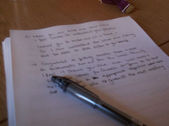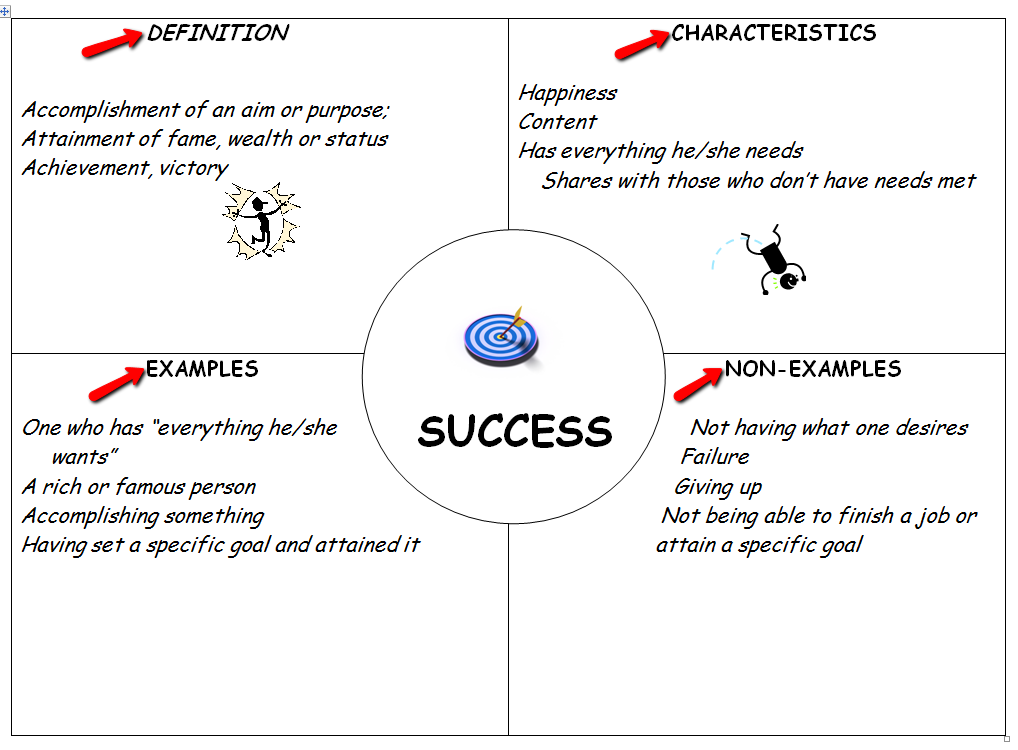Critical Reading and Taking Notes

Reading and note taking a are important skills that are essential to any Social Studies (History, Geography, Economics and Politics) course. Throughout the courses you are taking you will be asked to skim read, proofread or highlight the key ideas of a piece of writing . The following worksheets will be used during the year and can help you with common reading and note taking tasks assigned by other teachers .
Interactive Social Studies Notebooks
Reading Your Textbook And Vocabulary Building
The Freyer Model is a graphic organizer – an effective way to teach vocabulary at all grade levels. My students complete a Freyer Model for every vocabulary word we are learning, showing their understanding both linguistically and non-linguistically. There are five parts to this graphic organizer.
In the middle of the graphic organizer, in the circle, students enter their vocabulary word, e.g. cat. Then, students write the definition of their vocabulary word in the upper left hand box, e.g. a small domesticated carnivore.
In the upper right hand corner box, students write characteristics that come to mind about this word, e.g. furry, friendly, kittens, etc.
Students then write some examples and non-examples in the lower right and lower left hand boxes
In the middle of the graphic organizer, in the circle, students enter their vocabulary word, e.g. cat. Then, students write the definition of their vocabulary word in the upper left hand box, e.g. a small domesticated carnivore.
In the upper right hand corner box, students write characteristics that come to mind about this word, e.g. furry, friendly, kittens, etc.
Students then write some examples and non-examples in the lower right and lower left hand boxes
Applying Critical Thinking When Reading
The Cornell Note Taking Method
The following method of taking notes is very useful for high school students, particularly those taking AP World History or AP Human Geography. This method will help you to organize your notes in a uniform style and most importantly will help you to only take notes on the pertinent information from your textbook. This is a skill we will practice in class and will be one you can use when you study at university.
|
| ||||||||
Document / Source Analysis
As a student of Social Studies you will often have analyze primary and secondary sources which can be quite daunting depending on the length of the source and when it was written. You will practice analyzing documents / sources throughout middle and high school and will use worksheets as the ones attached below to make it easier for you.
Analyzing and Interpreting Images
Think Literacy: Reading Photographs (with a focus on making inferences)
Being able to analyzing and interpret images (paintings, photographs and cartoons) is just as much as an important skill for an historian as being able to work with written documents. As we move through the presentation on the Great Wall students will complete the following table with their partner.
*Make sure you use language such as:
Being able to analyzing and interpret images (paintings, photographs and cartoons) is just as much as an important skill for an historian as being able to work with written documents. As we move through the presentation on the Great Wall students will complete the following table with their partner.
*Make sure you use language such as:
- The presentation depicted _____________which would suggest that _________
- Based on the image of the a/the we can infer that ______. This tells us that ____________.
|
| ||||
Conducting Research
If you are asked by your teacher to conduct research on a particular topic or historical figure you should consider questions that you would like to be answers. Use the following question matrix to help you.
Peer Editing
Peer editing groups give each writer a chance to write for an audience other than the professor--when you know that your peers are going to be reading your draft, you are often more likely to think ahead about how you can interest your audience and how you can explain your ideas clearly After some initial inevitable self-consciousness, writing groups can really come together, look forward to reading and responding to each others' work, and take pride in the accomplishments of others.
Peer editing can be a confidence builder to those writers who are insecure about their own writing. You are likely to find that others first drafts aren't so great either, and you'll find out how much you can actually help other writers with your own responses. Below is an example of a peer editing checklist we use for AP World History. Different grade levels will use different types of peer editing checklists.
Peer editing can be a confidence builder to those writers who are insecure about their own writing. You are likely to find that others first drafts aren't so great either, and you'll find out how much you can actually help other writers with your own responses. Below is an example of a peer editing checklist we use for AP World History. Different grade levels will use different types of peer editing checklists.
Skimming and Scanning
|
Making Judgements
| |||||

